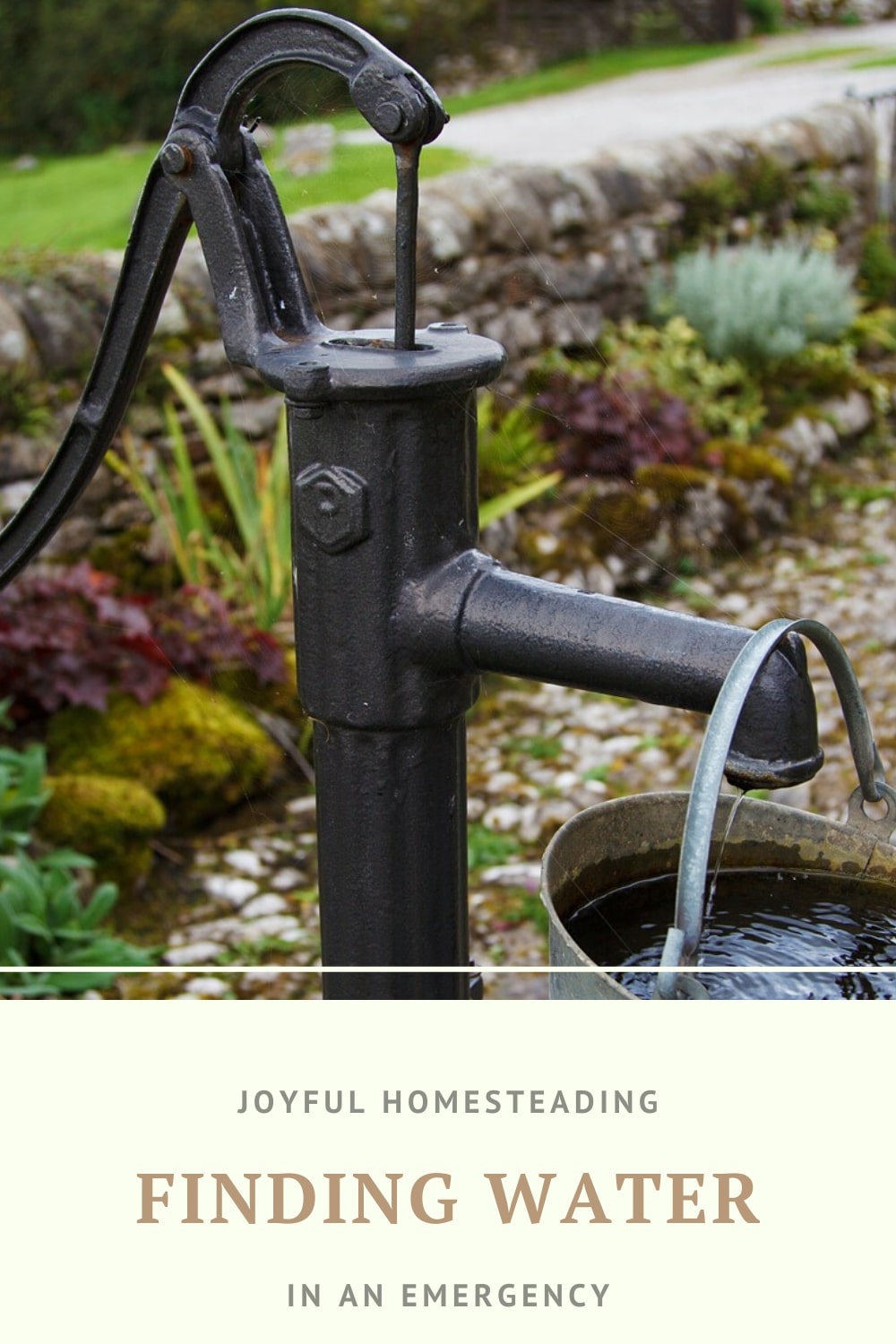Catastrophe Preparedness and
Finding a Reliable Source of
Drinking Water
Catastrophe preparedness, including storing drinking water, is crucial to self reliance. While we don't want to think about life without all our modern conveniences, preparing now will give you peace of mind should the worst happen.
A friend recently recommended a book that was eye-opening and quite frightening called One Second After by William R. Forstchen. It is a fictionalized account of what could happen if an electromagnetic pulse, also known as an EMP, were detonated over our country.
The result would be catastrophic. Every computer system for miles would be fried. Bad news considering that we have come to depend on computers for everything, from running our cars, to operating our power grids to even running some pace makers. What are we going to do when we can no longer turn on our faucets for water? And that, dear reader, is why we need catastrophe preparedness.
Finding a Reliable Source of Drinking Water
The number one issue in any catastrophe preparedness program is finding safe, clean drinking water. While it is crucial to store water as well, you should also have a plan to have a reliable source of water should you need it.
Here are a couple of ideas I have come across to help you with your catastrophe preparedness plan:

Buy or Make Your Own
Deep Well Hand Pump
For Catastrophe Preparedness
If you live in the country and have your own well, a pump system that will fit alongside your existing pump could be a good option for you. (You can see one here.) The company that makes these pumps also make a stainless steel model that can go deeper - up to 200 feet deep. The cost is about $300 at the time of this writing. It's not cheap, but it can certainly be a good option.
If your water is only 20 feet or so from the surface, you can make a simple and far cheaper hand pump out of PVC pipe, a foot valve and some garden hose. The instructions on building this thing are here, but I really had a dickens of a time understanding them, until Hezzy Steele Ford, a composer, musician and - thankfully - engineer took at look at them and explained them to me. Here's how it works.
The pipe - and especially the foot valve - have to go all the way into the water. That means the farther your water is from the surface, the longer the pipe will have to be.
The foot valve is designed to open when it is thrust against water, and then shut when it is pulled up again. As you continue to thrust the pipe into the water and yank it up again, the foot valve keeps opening to let in more and more water. Eventually the pipe fills with water all the way up to the top, and the water then runs through a garden hose attached to the top of the pipe.
When the water runs through the hose downward into your bucket, it creates a vacuum in the PVC pipe. Since nature abhors a vacuum, it must be filled with something - namely more water from your well. It starts sucking more water up and then, voila! You have running water for as long as you need it. A great idea, if your water is only 20 feet or so beneath the surface.
Unfortunately, our water is more than 120 feet beneath the surface. (You can contact the company that drilled your well if you're not sure how far down your water is.) That means we would have to lift up and thrust back into the water a pipe that is 120 feet long. That pipe would be holding 120 feet worth of water, which would make it pretty heavy. While we still may invest in a stainless steel pump system, I'm not sure this type of hand pump will work for our emergency plan.
What About a Generator?
We toyed with this idea as well. A generator will work well for short periods of time, but should the power be off for several months, the generator is far less practical. Think about it: Where are you going to find the gasoline? Also, gasoline doesn't store well, unless you put in additives. In the end, we felt we had to find something else for our catastrophe preparedness plan.
Rain Barrel
But what will work for our catastrophe preparedness plan is to set up some rain barrels outside our house to catch the downpour from our gutters. I came across these great instructions. For this system to work, you will need at least one good-sized barrel (preferably more) and gutters along with a downspout. The gutters don't need to be anything fancy, but you will need them.
You will need to keep a lid on your rain barrel both to keep out debris and to protect small children from falling in and drowning. Cut a hole in the top of your barrel that is approximately 2 inches in diameter, and then cover the hole with a screen to keep out debris such as leaves, dirt and pine needles. (If you don't these items will settle at the bottom of your barrel and eventually clog your runoff valve).
The water you collect can be made drinkable by investing in a good-quality water filtration system such as the one I found here , another crucial part of your catastrophe preparedness plan.
To get a better idea of what I am talking about as far as the catastrophe preparedness rain barrel plan goes, watch the video below:










New! Comments
Have your say about what you just read! Leave me a comment in the box below.